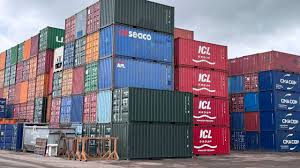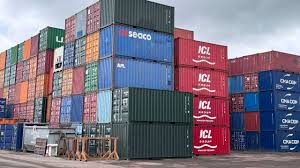Steel continues to serve as the backbone of industrial development. Whether it’s for skyscrapers, pipelines, bridges, automotive parts, or machinery, steel is everywhere. But when a project demands bulk quantities like 500 tons, accurate pricing becomes a critical factor in budgeting and planning. Businesses, contractors, importers, and government projects must consider a wide range of elements to receive the right steel quote.
In this article, we explore the current pricing trends, factors affecting the cost of 500-ton steel orders, sourcing tips, and how to secure the most favorable deal in today’s market.
1. Overview of Steel Demand in 2025
Global steel demand in 2025 remains strong, driven by infrastructure projects, real estate, green energy, and manufacturing. Countries like China, India, the U.S., and emerging markets in Africa and the Middle East continue to invest heavily in development.
With this demand, steel prices have remained volatile yet firm, making it essential for bulk buyers to approach sourcing strategically. A 500-ton order is substantial, and even a slight fluctuation in the per-ton price can impact total costs by tens of thousands of dollars.
2. Average Price Per Ton – Updated Figures
As of July 2025, global steel prices are as follows for common categories (based on FOB or CIF quotes from large suppliers):
| Steel Type | Price Range (USD/ton) | Total for 500 Tons |
|---|---|---|
| Hot Rolled Steel | $570 – $640 | $285,000 – $320,000 |
| Cold Rolled Steel | $620 – $700 | $310,000 – $350,000 |
| Galvanized Steel Coil | $680 – $760 | $340,000 – $380,000 |
| Stainless Steel | $1,700 – $2,300 | $850,000 – $1.15 million |
| Alloy Steel Plate | $750 – $900 | $375,000 – $450,000 |
| Steel Rebar | $530 – $590 | $265,000 – $295,000 |
These prices vary depending on country of origin, specification, and delivery terms. For instance, steel sourced from China or India may be more affordable than steel from Europe or the U.S.
3. Factors That Impact Steel Quote for 500 Tons
When you request a steel quote for 500 tons, suppliers evaluate a wide set of variables before presenting a final figure:
a. Steel Specification
Details such as grade (Q235, A36, SS400), strength, hardness, and resistance properties directly impact pricing. Higher-grade or customized steel often comes with a premium.
b. Dimensions & Processing
Standard coils or sheets are cheaper than customized sizes or pre-cut lengths. Additionally, value-added processes like galvanizing, annealing, pickling, or coating increase cost.
c. Packaging & Handling
For international shipments, the steel must be protected from corrosion or damage. This means strapped bundles, water-resistant wrapping, and in some cases, palletizing—each adds cost.
d. Shipping Distance
Whether you’re shipping steel from a domestic mill or overseas, transportation costs (container, bulk vessel, rail) are a major part of your total expense.
e. Market Fluctuations
Steel prices are influenced by real-time changes in:
-
Raw material (iron ore, scrap) prices
-
Oil and fuel prices
-
Trade regulations and tariffs
-
Labor disruptions or strikes
-
Global demand-supply cycles
4. Regional Trends: Where Are the Best Quotes?
Here’s a regional breakdown of where you might find competitive pricing:
-
China: One of the largest steel exporters; highly competitive prices; ideal for hot rolled and galvanized steel.
-
India: Increasing global supplier of HR/CR coils and rebars; reliable for bulk orders.
-
Turkey & CIS: Competitive on rebar and structural steel.
-
South Korea & Japan: Premium quality stainless and alloy steel; prices are higher but quality is unmatched.
-
USA & EU: Strong on compliance and quality; prices are higher due to labor and environmental regulations.
If you’re sourcing steel for Africa or the Middle East, proximity to India or China could reduce logistics costs and shorten delivery times.
5. What Should Be Included in a 500-Ton Steel Quote?
To make sure you’re comparing apples to apples, ensure your quote includes:
-
Steel type and grade
-
Dimensions (thickness x width x length or coil width)
-
Surface treatment or coating, if any
-
Packaging method (bare, wrapped, strapped)
-
Unit price and total price for 500 tons
-
Lead time (production + shipping)
-
Delivery terms (FOB, CIF, CFR)
-
Payment terms (TT, LC, advance payment)
-
Inspection and certifications (ISO, EN, ASTM, SGS/BV)
A transparent quote will help you avoid hidden charges or supply issues later.
6. Tips for Getting the Best Steel Quote for 500 Tons
1. Define Your Needs Clearly
Start with a detailed inquiry. Mention everything: steel type, dimensions, grade, delivery port, volume (500 tons), and required documents.
2. Contact Multiple Suppliers
Don’t rely on one quote. Compare at least 3–5 suppliers from different regions. Some may offer better freight rates or faster delivery even if the base price is similar.
3. Negotiate Volume Discounts
Most mills offer a 3–7% discount for 500+ ton orders, depending on steel type and production schedule.
4. Check Supplier Reputation
Look into the supplier’s export history, customer reviews, and certifications. Ask for recent shipment documents, photos, or video proof of packaging and loading.
5. Consider Long-Term Contracts
If you need steel regularly, consider locking in a rate with long-term supply contracts. This can help you avoid price spikes in the future.
7. Common Mistakes in Bulk Steel Purchasing
-
Not verifying mill certificates
Ensure the supplier provides valid MTCs (Mill Test Certificates) matching your order. -
Ignoring Incoterms
Not knowing the difference between FOB, CIF, and DDP can lead to unexpected shipping charges. -
Skipping sample orders
If the steel is custom-grade or first-time order, ask for a 1–2 ton sample batch to inspect. -
No clarity on delivery timeline
Some suppliers offer attractive prices but take 45–60 days to ship. Always confirm lead times.
8. Steel Suppliers to Consider in 2025
Some trusted names for 500-ton steel orders:
-
Midwest Steel Supply (USA) – Bulk coils, sheets, and bars with fast delivery and good client service.
-
Baosteel & Shougang (China) – Top-tier mills with wide capacity and international certifications.
-
JSW & Tata Steel (India) – Affordable with strong export focus.
-
POSCO (South Korea) – Global leader in stainless and galvanized steel.
For regional distribution, working with authorized traders or agents can simplify logistics and documentation.
9. Final Thoughts
Ordering 500 tons of steel is a major financial commitment, and understanding the quote structure can save you thousands of dollars. From choosing the right grade and supplier to finalizing payment and shipping terms, every detail matters.
In 2025, expect steel prices to remain relatively high due to ongoing global infrastructure investments. However, smart procurement strategies—like comparing multiple suppliers, verifying specs, and negotiating bulk deals—can help you secure top-quality material at the best possible rate.
If you’re serious about getting a quote for 500-ton steel orders, it’s best to partner with experienced, transparent, and responsive suppliers who understand your needs and can provide tailor-made solutions.



